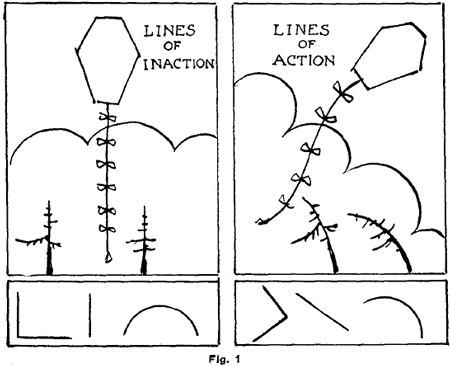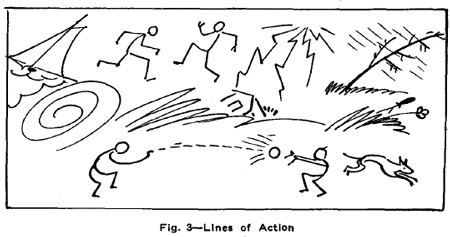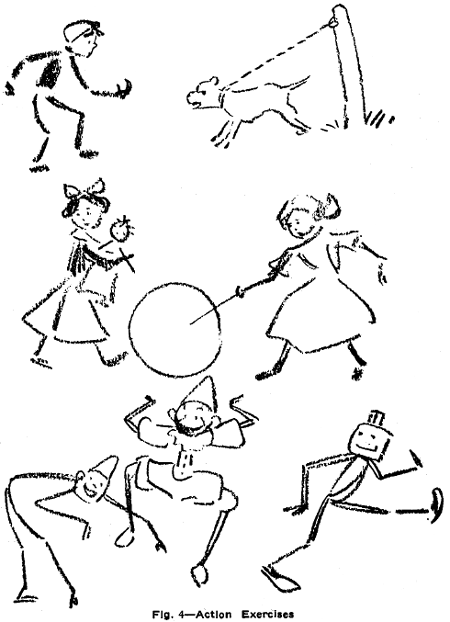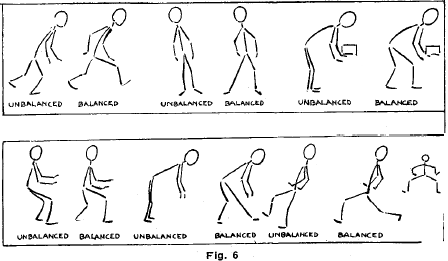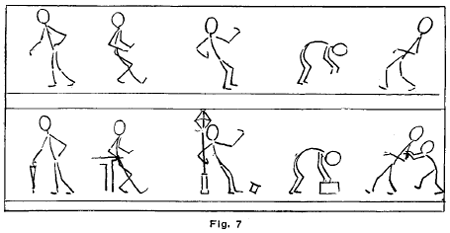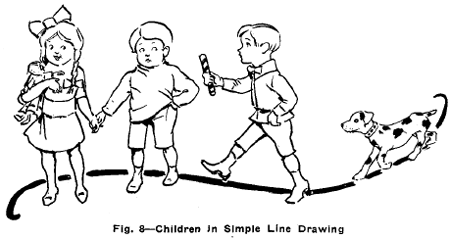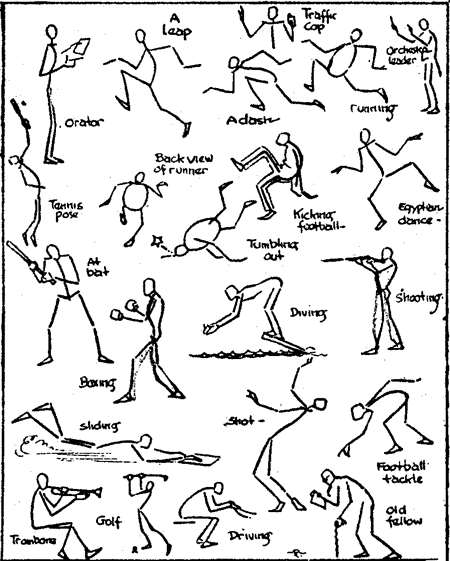Home > Directory Home > Drawing Lessons > How to Draw People > Action Drawing
ACTION DRAWING : HOW TO DRAW OBJECTS AND FIGURES IN MOTION & ACTION
|
|
Action Drawing LessonsAction.—When the vital element of action enters into the drawing interest is quickened in the mind of the beholder. Generally speaking, action in pictures simply drawn is shown most frequently by lines diverging from the horizontal and vertical. Thus, in Figs. 1 and 2 the lines on the left at the bottom, including the curved ones (which are resting horizontally) convey the impression of rest; whereas, similar lines at the right, being inclined, indicate unrest, or action.
In Fig. 3, none of the lines are at rest; action is shown throughout. In Fig. 4 there is the same divergence from the upright and the level.
The eye of the beginner cannot grasp the direction of the lines of an object in action. Drawing, in its elements, meaas form, color and action. Not only to the untrained mind, but to many far advanced in the study of art, form and color are subservient to action. If action is absent, interest is transient. Of course the drawing itself does not move but the idea does.
Human Figures in Action.—In portraying figures in action, the principles of equilibrium may portray various forms of action other than falling, but a figure out of balance conveys to the eye the impression of falling. Thus :
In the upper drawing the figures have no "visible means of support." In the lower part the deficiency is supplied. As a general rule, if a vertical line is drawn from the feet upward, and half of the figure lies on each side of the line, the figure will appear balanced.
FIGURE LAYOUTS For Action Sketches A simple method of laying out a figure in an action pose, or otherwise, is the "daffydil" skeleton figure. The accompanying plate carries a score of poses for various actions that a figure may be pictured in. This figure is a simplified construction of the human skeleton. It is easy to make, and of practical value to the professional artist, as well as of equally great aid to the student. Quite often in drawing sport cartoons in which there is much and varied action, you will find it best to resort to the "daffydil" figure in constructing the general layout. You are thus enabled, with a few lines, to lay in the figures and their poses and get an advance idea of how the picture will look. The editor is shown the composition that much sooner and more plainly than by a rough sketch, and should a change be desired, you will not have wasted the time required to make a complete figure sketch.
In using any figures in which foreshortening occurs (in which this method is especially valuable), you should make your line short in accordance with the requirement that demands the foreshortening. You should remember always that the lines you use are to represent a figure, and therefore, unless your aim is caricature, you should draw those lines in proportion. Try using the "daffydil" figure to show a man running. You can make him speed up by placing the front leg at a higher angle, and the rear leg also pointing farther backward at an angle. To slow up this figure, in the same position, turn the front leg downward and the rear leg closer in towards the front leg. With these "daffydil" figures it is a simple matter to show whatever speed and action may be desired. The spinal column line can be bent to add to an action when necessary. Quite a few years ago Tad (T. A. Dorgan) ran a clever comic series, called the "Daffydils," using this same type of figure.
|
Privacy Policy .... Contact Us





